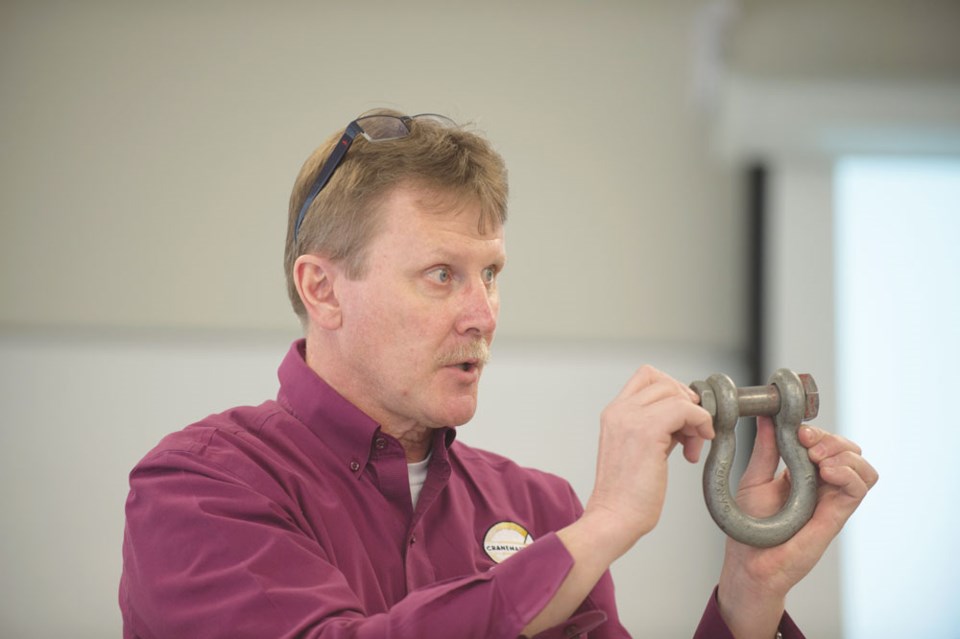You could almost hear the eyes widening as those in the audience realized there is an awful lot more to rigging than what they do on a daily basis. Thus the 36-person audience at the Saskatchewan Petroleum Industry Health Information Group session became highly engaged, peppering Rick Sikora, president and CEO of Cranemasters Hoisting and Rigging Training with questions.
The event took place at �鶹��Ƶeast College in Weyburn on March 2
“The rigging world is an art form, is a trade, is a craft, that got forgotten about,” Sikora said.
Rigging, he explained, is everything from the hook down, while craning, is from the hook up.
He asked how many people tighten a lifting shackle until it won’t go any further, then turn it back a quarter turn. Many people did, and it’s a common practice. However, it is a wrong practice.
“The next time you tighten up the lug nuts on your truck, back them off a quarter turn,” he said jokingly. The point came across clear as a bell.
“Don’t ever back off a shackle,” he clarified, adding there’s actually a torque specification. But how would one know that? A proper lifting shackle comes with an owner’s manual.
Owner’s manual? For a shackle? That was one of those aha moments that swept through the audience.
That was a repeated refrain throughout the presentation: check the owner’s manual. Also, a shackle is not a clevis. There is a huge difference, he noted. As examples, a lifting shackle will have a 5:1 design factor for material, and 10:1 for people. If a shackle is used for towing, it should be taken out of service.
He did his own investigation, going to rigging stores in Alberta, and found that 50 per cent sold him shackles not made for lifting.
Similarly, he did a recent audit in Calgary and found, in that case, 70 per cent of the slings examined were not compliant.
“We need to know we use the right tool, the right capacity,” Sikora said. Eyebolts, for instance, do not come with capacity markings. If you see a capacity marking, it’s usually fake.
The Canadian Standards Association does not cover rigging, he noted, but the American Society of Mechanical Engineers does.
“There are no regulations, no standards, for a rigging school,” he said, having chosen to go into that business.
“Be cautious of the word ‘ticket.’ It does not mean ‘competent.’” Sikora warned.
He emphasised the need to know the weight of what you’re lifting, and the employer must provide that information. You can’t just use the scale on a mobile crane.
He noted that his own son, a rigger, refused to do a 100,000 pound lift because he thought it was unsafe. The contractor proceeded anyhow, and the lift collapsed.
Sikora’s presentation covered many points on slings, including the importance of having no defects whatsoever on a sling being used. Many people often use makeshift protectors to protect slings from damage, but that’s a bad idea. They can lead to catastrophic failure. It’s important to use properly designed sling protectors.
In using a sling in a choke configuration, it is supposed to have a 60 degree air gap, as opposed to being wrapped tightly to the item. That air gap is something basically no one does, because they want the choke to ‘bite’ the item. The result? “Take choke capacity and cut it in half. Pretty scary, eh?” Sikora said.



.png;w=120;h=80;mode=crop)
